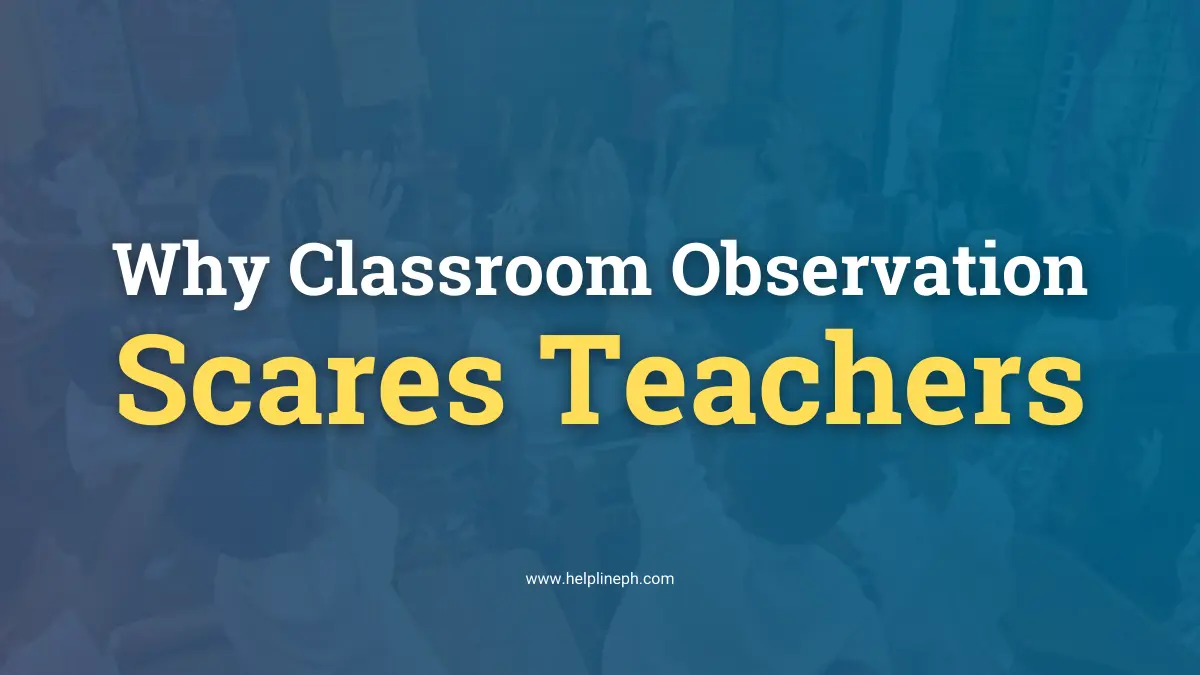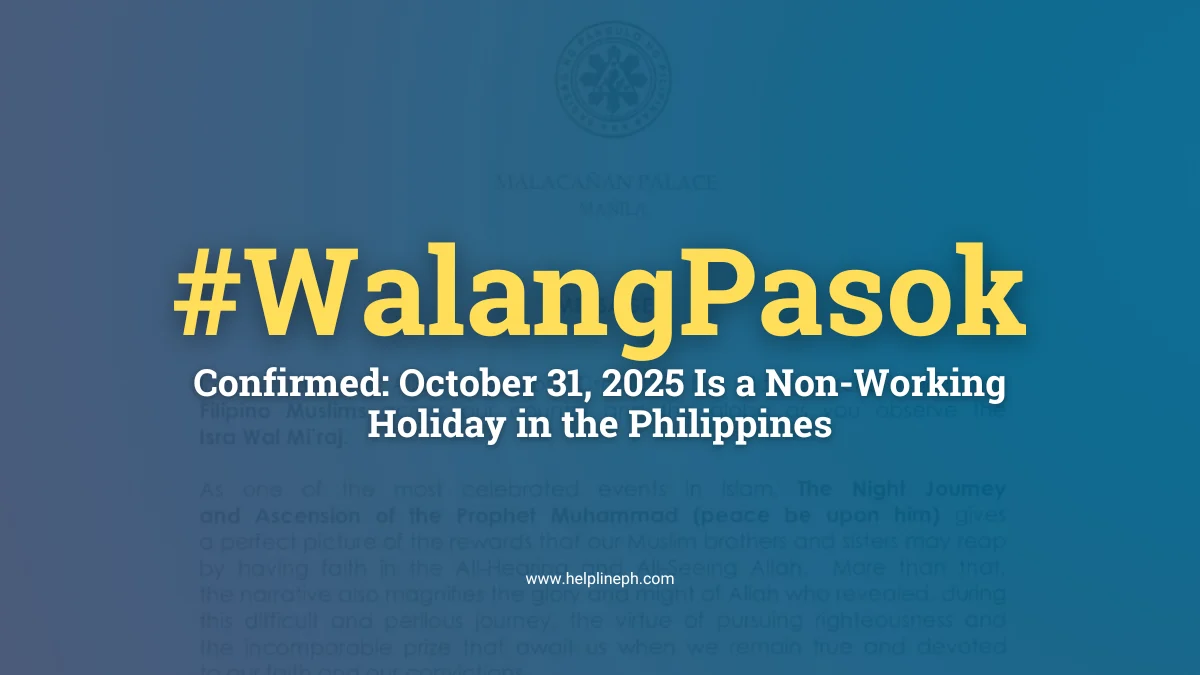What is Classroom Observation?
Classroom observation is a key process in education where someone, usually a principal or a school head, watches a teacher during a lesson. The main goal is to see how the teacher conducts the class, interacts with students, and uses teaching methods. This process helps give feedback to teachers about their teaching practices. Feedback means giving comments on what a teacher does well and what they can improve. By understanding their strengths and weaknesses, teachers can make their lessons better and help students learn more effectively.
Classroom observation is not just about watching; it’s about helping teachers grow. By seeing how lessons are delivered and how students respond, teachers can learn new ways to engage their students and improve their teaching techniques. This makes education better for everyone involved.
Why is Classroom Observation Scary for Teachers?
Even though classroom observation aims to help teachers, many teachers feel scared or nervous when they know they are being observed. Here are some reasons why classroom observation can be frightening:
1. Fear of Judgment and Criticism
One of the main reasons teachers fear classroom observation is the worry that they are being judged. Teachers often feel that their entire teaching ability is being evaluated, not just one lesson. This can lead to feelings of anxiety and stress. Even though the goal is to provide helpful feedback, some teachers think that the observation will only focus on their mistakes. This fear can make teachers tense and less effective during the observation.
Imagine preparing a lesson that you believe is great, but knowing someone will watch and judge every move you make. It’s natural to feel nervous. Teachers might worry that any small mistake could be seen as a sign that they are not good enough, leading to self-doubt and reduced confidence.
2. Principal’s Reactions
Sometimes, the principal or school head may react negatively during or after the observation. If a principal shows disappointment or criticizes a teacher harshly, it can make teachers anxious. This fear is even stronger if there are personal issues or misunderstandings between the principal and the teacher.
For example, if a teacher has had disagreements with the principal in the past, they might fear that the observation will be used to point out their flaws rather than to help them improve. This can lead to a strained relationship between teachers and school heads, making the observation process more stressful.
3. Lack of Preparation or Support
Classroom observation should help teachers grow, but sometimes teachers do not receive enough preparation or support before the observation. Without proper guidance, teachers might feel unprepared and more nervous, leading to increased stress and fear.
Teachers might not know what to expect during the observation or how to prepare effectively. Without clear instructions or training, they might struggle to present their best teaching methods, fearing that they will not meet the expectations of the observer.
4. Misunderstanding the Purpose of Observation
Many teachers do not fully understand the real purpose of classroom observation. If teachers think that the observation is only meant to catch their mistakes, they will have a negative view of the process. This mindset causes worry and stress even before the observation begins.
When teachers see observation as a way to find faults rather than a tool for improvement, they become defensive and less open to feedback. This can hinder the effectiveness of the observation process, making it less beneficial for both teachers and students.
What is the True Purpose of Classroom Observation?
It’s important to understand that classroom observation is not meant to punish teachers. The real goal is to help teachers improve their teaching skills. When a principal sees that a teacher needs help, it is their job to guide the teacher in the right direction.
Classroom observation is a supportive tool designed to enhance teaching quality. By providing constructive feedback, principals can help teachers develop new strategies, better engage students, and address any challenges they might be facing in the classroom.
1. Helping Teachers Grow
Classroom observation is a chance for teachers to get valuable feedback from their supervisors. It should not be feared but seen as an opportunity to learn and grow. This feedback helps teachers focus on areas where they can improve and enhance their teaching methods.
For example, a teacher might learn new ways to manage the classroom, engage students, or use technology effectively. These improvements can lead to a more positive learning environment and better student outcomes.
2. Providing Support
Principals and school heads are responsible for supporting their teachers. If they see that a teacher is struggling with certain teaching methods, they should offer solutions and concrete steps to help the teacher improve.
Support can come in many forms, such as professional development workshops, mentoring programs, or one-on-one coaching sessions. By providing these resources, principals can help teachers overcome challenges and become more effective educators.
3. Finding Solutions, Not Punishment
If a teacher has weaknesses in their teaching, it should not be seen as a failure but as something that needs fixing. Classroom observation should act as a bridge between teachers and principals, helping them work together to improve education.
For instance, if a teacher is having trouble engaging students, the principal can suggest new teaching techniques or resources that can help. This collaborative approach fosters a positive and supportive school environment where teachers feel encouraged to improve.
How to Reduce Fear of Classroom Observation
If you are a teacher feeling scared or nervous about classroom observation, here are some tips to help reduce your stress:
1. Prepare in Advance
Proper preparation is key to success. Make sure you are ready before the observation. Know your lesson plan well and have all your teaching materials ready. When you are well-prepared, your anxiety will decrease.
Start by reviewing your lesson objectives and ensuring that your lesson plan is clear and organized. Practice your lesson in advance, and make sure you have all the resources you need, such as handouts, visual aids, and technology tools. The more prepared you are, the more confident you will feel during the observation.
2. Focus on the Purpose of Observation
Think of classroom observation as a way to learn and improve, not as a way to catch your mistakes. Use the feedback as a guide to become a better teacher.
Remind yourself that the observer is there to help you grow, not to criticize you. Embrace the feedback as an opportunity to enhance your teaching skills. Focus on what you can learn from the observation rather than fearing what the observer might think.
3. Don’t Be Afraid to Ask Questions
If you are unsure or unclear about the classroom observation process, don’t hesitate to ask your principal or school head. It is better to understand everything clearly than to worry unnecessarily.
Ask questions like:
- What are the main areas you will be observing?
- How will the feedback be provided?
- Are there any specific teaching methods you would like me to use?
Having a clear understanding of the observation process can help you feel more comfortable and reduce your anxiety.
4. Trust Yourself
Fear often comes from a lack of self-confidence. Remember that you are a professional and capable of teaching well. If you make mistakes, see them as opportunities to learn and improve, not as failures.
Believe in your abilities and the hard work you have put into your teaching. Trust that you have the skills to handle the observation and that any feedback you receive is meant to help you grow.
5. Seek Support from Colleagues
Talking to your fellow teachers about their experiences with classroom observation can provide comfort and valuable insights. They can share tips on how to handle the process and reduce your fear.
Form a support group where you can discuss your concerns and share strategies for success. Knowing that you are not alone can make the observation process less intimidating.
6. Stay Positive
Maintain a positive attitude towards classroom observation. Instead of fearing it, view it as an opportunity to showcase your teaching skills and learn new ways to engage your students.
Focus on the positive aspects, such as the chance to receive constructive feedback and the potential for personal and professional growth.
My Personal Stories and Experiences
This is my personal experience with classroom observation.
When I first experienced classroom observation, I was extremely nervous. I thought the principal would find faults in my teaching. However, after the observation, the principal provided me with positive feedback and useful suggestions to improve my lessons. This experience showed me that classroom observation is truly meant to help teachers grow and not to criticize them.
Another teacher, Maria, shared that she used classroom observation as a chance to try new teaching methods. With the support of her principal, she was able to implement new strategies that made her classes more interactive and enjoyable for her students. Maria realized that the observation was a valuable tool for her professional development.
Benefits of Classroom Observation
Understanding the benefits of classroom observation can help reduce the fear associated with it:
1. Professional Development
Classroom observation is an excellent opportunity for professional development. It allows teachers to receive feedback from experienced educators, helping them improve their teaching practices.
Teachers can learn new techniques, strategies, and methods that can enhance their effectiveness in the classroom. This continuous learning process contributes to the overall improvement of education quality.
2. Improved Teaching Methods
Through feedback, teachers can identify which teaching methods are effective and which ones need improvement. This helps in creating more engaging and effective lessons that cater to the diverse needs of students.
For example, a teacher might discover that using more interactive activities increases student participation and interest. This insight can lead to more dynamic and successful teaching practices.
3. Enhanced Student Learning
When teachers improve their methods, it directly benefits the students. Better teaching practices lead to better student understanding, engagement, and academic performance.
Students feel more supported and motivated when teachers use effective teaching strategies. This creates a positive learning environment where students can thrive.
4. Strengthened Teacher-Principal Relationships
Classroom observation can strengthen the relationship between teachers and principals. When principals provide constructive feedback and support, it builds trust and respect between them.
A strong relationship with the principal can lead to a more positive work environment and better collaboration in achieving educational goals.
Overcoming Common Challenges
Even with the best intentions, there can be challenges in the classroom observation process. Here are some common challenges and how to overcome them:
1. Handling Negative Feedback
Receiving negative feedback can be tough, but it’s important to handle it professionally. Listen carefully to the feedback, ask for specific examples, and seek clarification if needed.
Instead of taking it personally, view it as a chance to improve. Develop an action plan based on the feedback and work towards making the necessary changes.
2. Time Management
Preparing for classroom observation can be time-consuming. To manage your time effectively, plan your lessons well in advance and organize your materials ahead of the observation day.
Use time management techniques such as creating a schedule, setting priorities, and avoiding procrastination to ensure you are well-prepared without feeling overwhelmed.
3. Maintaining Authenticity
While it’s important to prepare for an observation, it’s equally important to remain authentic. Avoid changing your teaching style completely just to impress the observer.
Stay true to your teaching philosophy and use the observation as a way to enhance your existing methods rather than completely overhaul them.
Tips for a Successful Classroom Observation
To make the most of the classroom observation process, consider these tips:
1. Clear Lesson Objectives
Ensure that your lesson objectives are clear and aligned with the curriculum. Clear objectives help you stay focused and make it easier for the observer to understand your teaching goals.
2. Student Engagement
Engage your students actively during the lesson. Use interactive activities, ask questions, and encourage participation to make the class more dynamic and interesting.
3. Effective Classroom Management
Maintain good classroom management by establishing clear rules and expectations. This creates a positive learning environment and minimizes disruptions.
4. Use of Teaching Resources
Utilize various teaching resources such as visual aids, technology, and hands-on materials to make your lessons more engaging and effective.
5. Reflect on Your Teaching
After the observation, take time to reflect on your teaching. Consider what went well and what can be improved. Use this reflection to make necessary adjustments in your future lessons.
Long-Term Benefits of Classroom Observation
Classroom observation, when approached positively, offers long-term benefits for both teachers and the education system:
1. Continuous Improvement
Classroom observation promotes continuous improvement by providing regular feedback and opportunities for professional development. Teachers can keep refining their skills and adapting to new educational trends and methods.
2. Enhanced Teaching Quality
Over time, classroom observation leads to higher teaching quality. Teachers become more effective in delivering lessons, managing classrooms, and engaging students, which in turn leads to better student outcomes.
3. Professional Growth
Teachers who participate in regular observations are more likely to engage in professional development and pursue further education. This commitment to growth benefits their careers and the overall education system.
4. Positive School Culture
A culture of continuous improvement and support creates a positive school environment. When teachers feel supported and valued, it fosters a sense of community and collaboration among staff.
Stories of Teachers About Their Experiences in Classroom Observation
These are some experiences of teachers in their classroom observation.
John, a high school math teacher, was initially terrified of classroom observation. He believed that any mistake he made would be held against him. However, after his first observation, he received constructive feedback that helped him improve his lesson planning and student engagement techniques. John now looks forward to observations as they help him grow as a teacher.
Maria, a new teacher, felt overwhelmed by the idea of being observed by her principal. With guidance and support from her principal, Maria learned how to structure her lessons better and use interactive teaching methods. The positive experience not only boosted her confidence but also made her a more effective teacher.
Conclusion
In summary, classroom observation should not make teachers afraid. Although it can cause nervousness, it is a process designed to help teachers become better. Remember that the purpose is to provide support, not to punish. If principals and school heads are understanding and provide proper guidance, teachers will feel more at ease with classroom observations. With good communication and preparation, fear can be reduced, and teachers can view classroom observation as a positive tool for growth.
Classroom observation, when conducted with the right intentions, fosters a supportive environment where teachers can thrive and enhance their teaching methods. This ultimately leads to better education for students and a more collaborative and positive school culture.
Frequently Asked Questions (FAQs)
What is classroom observation?
Classroom observation is a process where a teacher’s teaching methods are watched and evaluated to identify strengths and areas for improvement. It aims to help teachers grow and enhance their teaching skills.
Why do teachers fear classroom observation?
Teachers fear classroom observation because they worry about being judged or criticized. Negative reactions from principals and a lack of support can also increase anxiety.
How can classroom observation help teachers?
Classroom observation provides valuable feedback that helps teachers understand what they are doing well and what needs improvement. This feedback can guide teachers in enhancing their teaching methods.
What should teachers do to prepare for a classroom observation?
Teachers should prepare by knowing their lesson plan thoroughly, organizing teaching materials, and understanding the observation process. Being well-prepared can reduce anxiety.
How can principals make classroom observation less scary for teachers?
Principals can make classroom observation less scary by providing clear communication, offering constructive feedback, and supporting teachers in their professional growth.
Can classroom observation improve student learning?
Yes, when teachers use feedback from classroom observations to improve their teaching methods, it can lead to better student engagement and academic performance.
What should a teacher do if they receive negative feedback during an observation?
Teachers should handle negative feedback professionally by listening carefully, asking for specific examples, and creating an action plan to address the areas for improvement.
How often should classroom observations take place?
The frequency of classroom observations can vary depending on the school’s policies, but regular observations are beneficial for continuous teacher development and improvement.
What are some effective teaching methods that can be highlighted during a classroom observation?
Effective teaching methods include interactive activities, clear lesson objectives, use of technology, good classroom management, and engaging students through questions and discussions.
How can teachers build a positive relationship with their principals regarding classroom observations?
Teachers can build a positive relationship by maintaining open communication, being receptive to feedback, showing willingness to improve, and collaborating with principals to achieve common educational goals.






